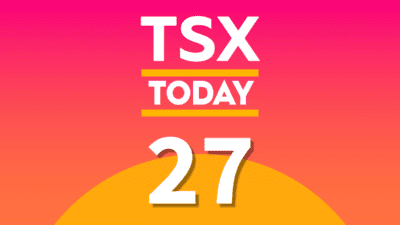The Fed-induced selloff in recent days is giving investors a chance to buy some top TSX stops at undervalued prices.
What happened?
The U.S. Federal Reserve indicated markets should prepare for interest rate hikes, as rising inflation is expected to force the Fed’s hand sooner than anticipated. The Federal Open Market Committee kept the benchmark rate near zero in its latest meeting, but projections from the officials suggested two potential rate increases might be on the way before the end of 2023. That’s much faster than the outlook provided in March when the group signalled it didn’t anticipate any upward moves before 2024.
The stock market reacted harshly with rate-sensitive stocks taking the biggest hits. The U.S. dollar bounced after an extended slump. Commodity stocks subsequently dropped as oil, copper, and gold prices fell.
The Fed chairman Jerome Powell said the market shouldn’t read too much into the projections, as they don’t guarantee two moves in 2023. He might have a point, as the committee is still of the opinion that inflation will trend at its 2% target over the longer term. The 5% year-over-year inflation spike in May has investors wondering if the rise in the CPI is truly transitory.
Stocks and commodities are arguably overbought after the huge rallies to start 2021. The selloff could be a good opportunity to buy some cheap names.
Canadian National Railway
CN (TSX:CNR)(NYSE:CNI) was already under pressure due to its deal to buy Kansas City Southern. The Fed-led selloff in the market has added to the pain. CN stock trades for $130 per share at the time of writing compared to $148 in April.
CN is attempting to purchase Kansas City Southern for US$30 billion. That’s 20% more than Kansas City Southern had agreed to take from CP Rail, CN’s Canadian competitor. The high price and concerns that regulators could block the takeover have put a cloud over CN stock. Investors should use the rare weakness to buy the shares.
Why?
If the deal gets approved, CN will become a dominant player in the North American industry, adding Mexico links to a unique network of nearly 20,000 route miles that currently connect Pacific and Atlantic ports in Canada to the U.S. Gulf Coast. In the event CN doesn’t get approval to close the deal, it would simply continue being a very profitable player that generates carloads of free cash flow for investors.
Barrick Gold
The price of gold slid as much as 5% or US$90 per ounce on Thursday to US$1,770 per ounce in response to the Fed news. Rising interest rates normally lead to higher returns from no-risk investments. Gold doesn’t pay you anything to own it, so the price of the yellow metal can come under pressure when the opportunity cost of owning gold increases.
Gold stocks fell in response, including Barrick Gold (TSX:ABX)(NYSE:GOLD), which finished Thursday down nearly 6% to $26 per share. Barrick Gold traded as high as $40 last August when gold hit $2,080 per ounce.
Near-term volatility could continue, but the gold selloff appears overdone, and Barrick Gold looks undervalued at this level. The company produces gold at all-in sustaining costs of about US$1,000 per ounce. Barrick Gold has zero net debt and is swimming in extra cash. In fact, the company is giving investors an extra US$0.42 per share this year in a special return of capital payment on top of the US$0.36 per share in annualized dividends.
The bottom line
CN and Barrick Gold are leaders in their respective industries. The stocks look cheap today and could deliver big gains for patient investors.







